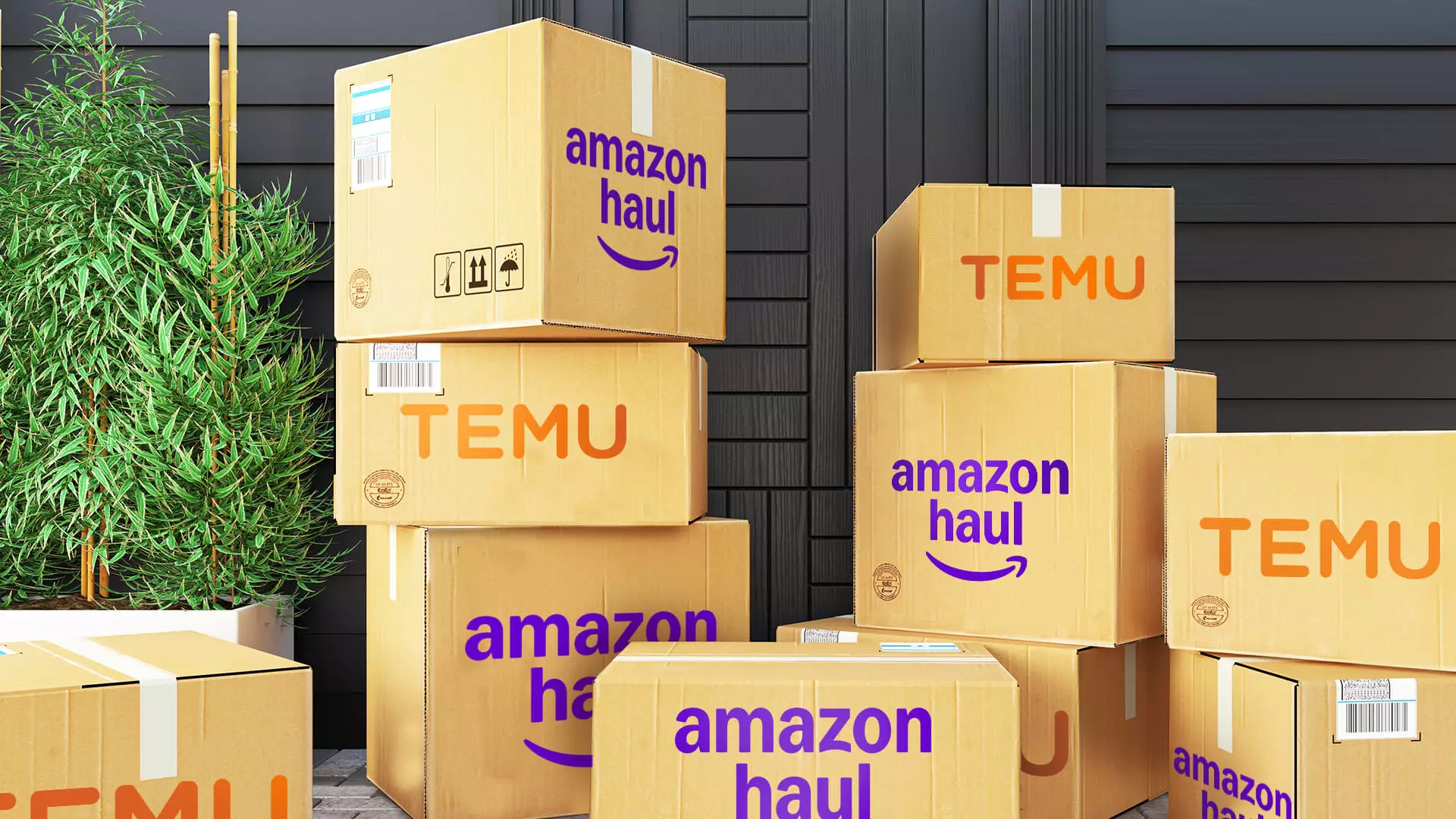In the e-commerce arena, constant evolution is a requirement for survival. Amazon, long established as a titan in this industry, is strategically positioning its discount storefront, Haul, to compete with rising platforms like Temu and Shein. With plans to roll out Haul in Europe later this year, Amazon’s strategic move points towards a broader global footprint that could reshape online shopping dynamics. However, as they venture into this new territory, numerous challenges loom on the horizon.
Amazon’s ambitions for Haul are unmistakable. Following its initial launch in November, the company is currently exploring avenues for a more extensive international presence. Job listings suggest that the need for skilled personnel to support these aspirations is at an all-time high, reflecting Amazon’s commitment to rapidly scaling its offerings. The openings for software development engineers and senior product managers aimed at launching Haul in locations like Mexico indicate a methodical approach to global outreach.
Yet, despite this enthusiasm, Amazon has remained tight-lipped about specific operational strategies. A spokesperson stated that the focus remains on enhancing partnerships with sellers to maximize customer satisfaction through varied selections and competitive pricing. This echoes the company’s historical approach – pushing to optimize customer engagement and convenience, which has long been its hallmark.
The urgency behind Haul’s launch further stems from the meteoric rise of competitors like Temu and Shein, which have garnered immense popularity through their exceptionally low prices on a range of products from apparel to cosmetics. These platforms have successfully tapped into the desires of budget-conscious consumers, fostering a level of brand loyalty that Amazon now seeks to challenge.
Drawing inspirations from these competitors, Haul has adopted a similar pricing strategy, presenting ultra-affordable products that resonate with deal-seeking shoppers. By focusing on products often priced below $20 and even lower, Amazon is aligning itself with market expectations and consumer behavior trends. The inclusion of affordable items, like a $1 eyelash curler or $2.99 cubic zirconia ring, reinforces its strategy to attract a wider customer demographic.
However, the forthcoming European launch does not come without its complexities. Reports indicate that if Amazon maintains its standard shipping practices, including plastic packaging, it might face challenges concerning its sustainability initiatives. In 2023, for instance, Amazon made a notable shift towards more eco-friendly packaging in Europe, including a movement towards recyclable paper bags and cardboard-only shipping materials. This raises pertinent questions regarding how Haul will reconcile its operational needs with the pressing demands for environmental responsibility, which are particularly pronounced in the European market.
This is a critical juncture for Amazon, as an inconsistency in its sustainability messaging could undermine consumer trust, especially in a market that increasingly prioritizes eco-conscious practices. Thus, the seamless integration of Haul into Amazon’s existing operations requires not just a logistic alignment but also a fundamental alignment with the company’s broader sustainability goals.
In adapting to new market demands, Amazon is not only focusing on what products to sell but also on how best to monetize its offerings. With the recent integration of sponsored products within Haul’s search results, Amazon is taking steps to bolster profit margins while increasing product visibility. This dual strategy not only enhances user experience by showcasing relevant offerings but also aligns with Amazon’s long-term revenue model, which has seen substantial growth—totaling $56.2 billion in ad revenue in 2024.
The addition of influencer-curated storefronts in Haul represents another innovative step for Amazon, tapping into the influential social media economy. Utilizing the popularity of influencers like Michaela Delvillar, who boasts a significant following on platforms like TikTok, helps establish credibility and trust with potential customers, particularly younger demographics who are key drivers of e-commerce growth.
As Amazon charts its course toward global prominence with Haul, it must remain vigilant regarding geopolitical landscapes that affect e-commerce, particularly concerning trade policies associated with Chinese imports. Recent scrutiny surrounding the de minimis rule, allowing duty-free packages under $800, adds a layer of complexity to Haul’s framework, especially given the reliance on goods from these international sellers. Recent interviews with Amazon’s CEO highlight an awareness of these challenges, emphasizing that while the de minimis loophole may enable lower pricing strategies in the short term, long-term sustainability and compliance cannot be overlooked.
Amazon’s journey with Haul is emblematic of the evolving e-commerce landscape, rife with opportunities and obstacles. As the company forges ahead with plans for expansion, balancing consumer expectations with sustainability practices, monetization strategies, and regulatory compliance will determine the ultimate success of this venture. If executed well, Haul could not only reinforce Amazon’s market position but also redefine discount shopping for a global audience. Nevertheless, the road ahead requires careful navigation amidst challenging dynamics in both consumer behavior and market regulation.

